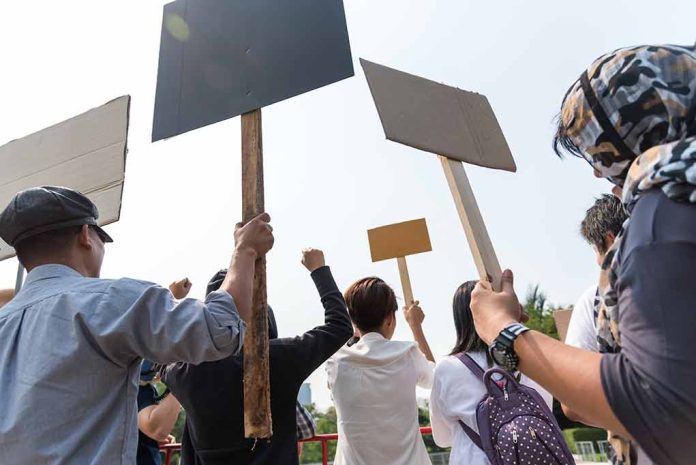
(UnitedVoice.com) – The American people have been protesting since before they were Americans. When the country was founded, and the Bill of Rights was created, it was natural that the Founding Fathers made sure that it was a protected right.
Although protesting is supposed to be protected, it has led to a number of clashes between demonstrators and authorities. There are steps everyone can take to make sure they avoid a messy situation.
What Does The First Amendment Protect?
The First Amendment allows everyone in America to peacefully assemble and express their views. That doesn’t mean that every demonstration will be treated equally, however. Law enforcement authorities and government officials are allowed to place restrictions on protests.
Where Can You Protest?
According to the American Civil Liberties Union (ACLU), individuals who are attending protests have the strongest rights when they are on what’s known as “traditional public forums.” That means when they are at parks, on sidewalks, or places of that nature. They also generally have the right to air grievances in front of government buildings or public property as long as they aren’t interfering with the business the property was designated for or blocking access.
For example, Americans are allowed to protest in front of Congress on Capitol Hill, but they aren’t permitted to enter a lawmaker’s office and stage a sit-in. They can also protest on the sidewalks surrounding the complex but aren’t allowed to block roads.
Stay Off Private Property Without Permission
Protesters do not have the right to enter the private property of a business or individual and begin a demonstration. That can lead to an arrest or a deadly conflict.
Photos and Video
Protesters are allowed to photograph anything they see in plain view if they are lawfully present at a location. They never need permission to photograph or take videos of the police or other public officials if they are in a public space. If a protester is on private property, then the property owner has the right to set the rules.
Peaceful Is the Key Word
Although Americans have the right to assemble, they don’t have the right to cause violence. Assault and causing property damage are not legal forms of protest and can result in arrest.
What To Do if Your Rights Are Violated
If a protester believes a law enforcement officer has prevented them from peacefully protesting, they should write down everything they remember. That includes the officer’s name, patrol car number, badge number, and the department they work for.
The protester should also see if anyone witnessed the incident and get their information. They should also take pictures if they suffered any injuries. They can file a complaint with the agency’s internal affairs division or contact a lawyer for more options.
Copyright 2023, UnitedVoice.com






















